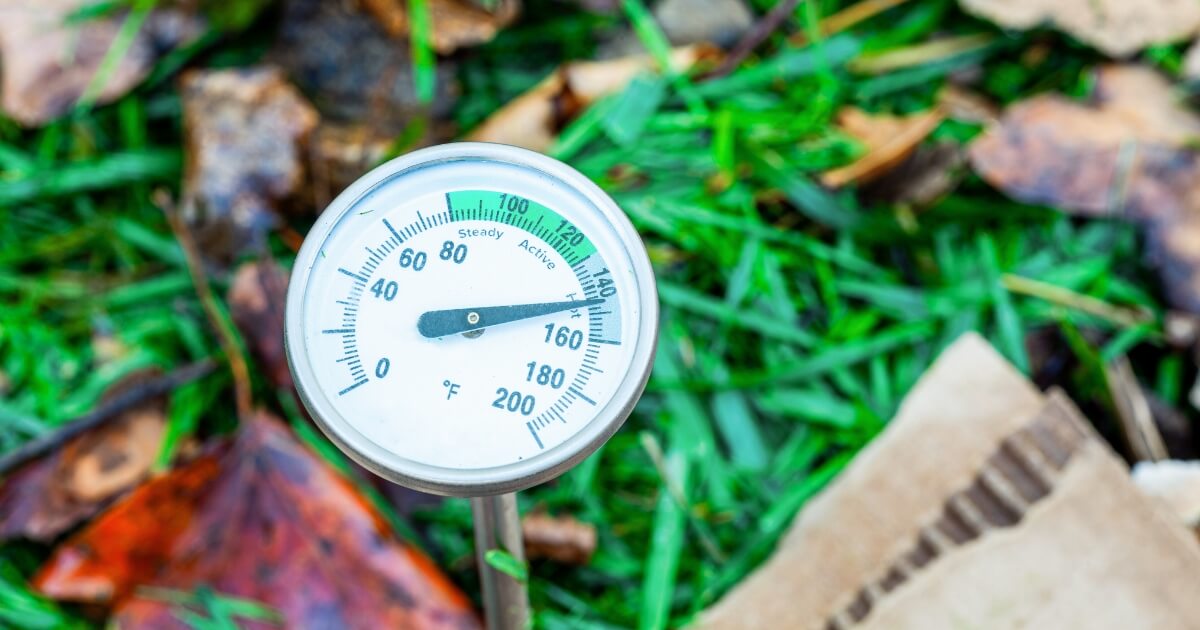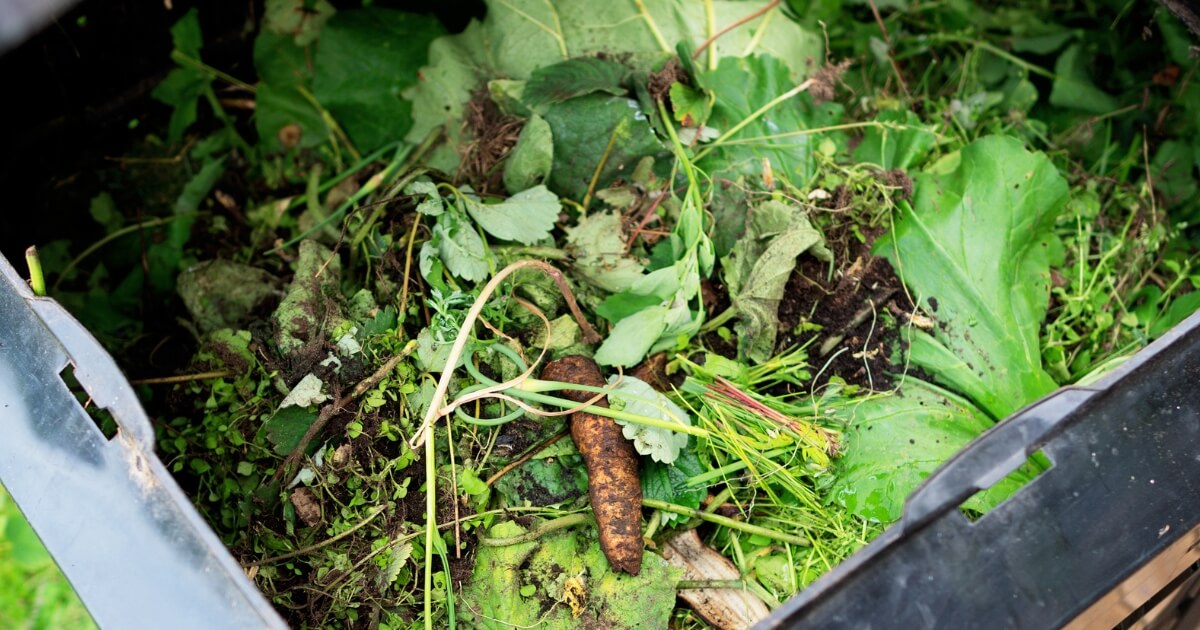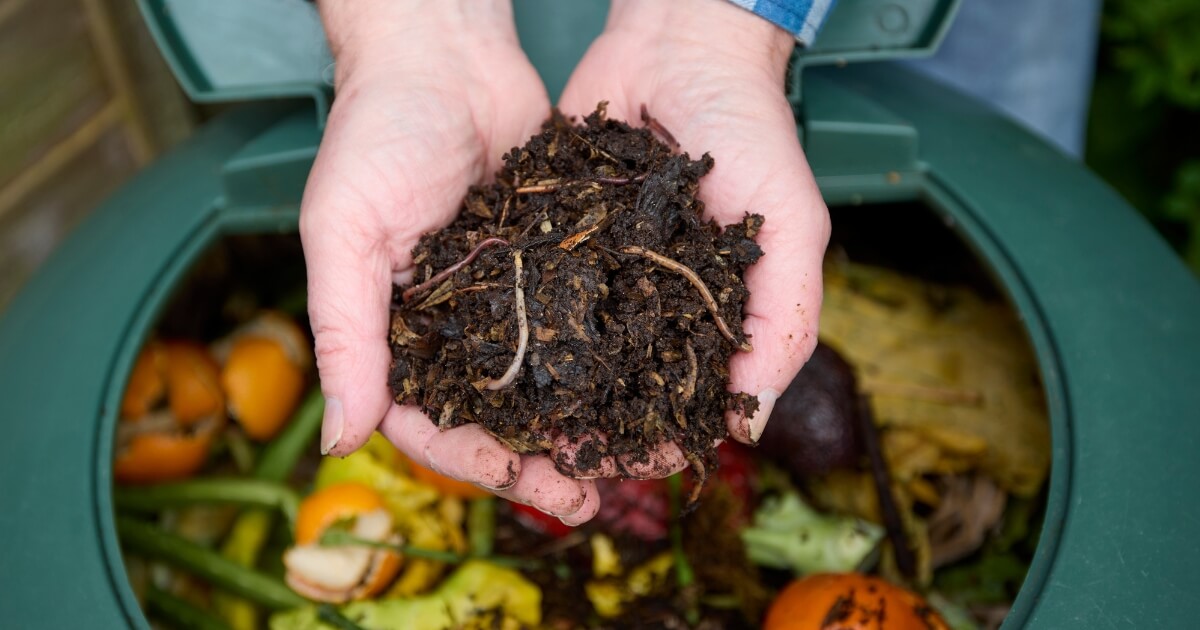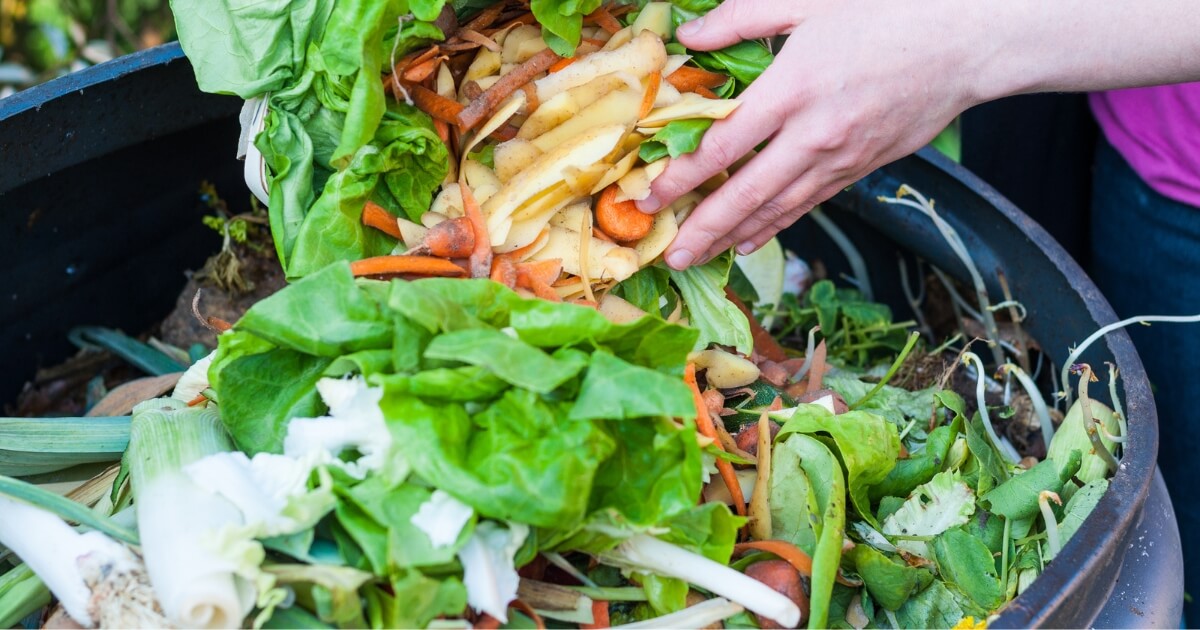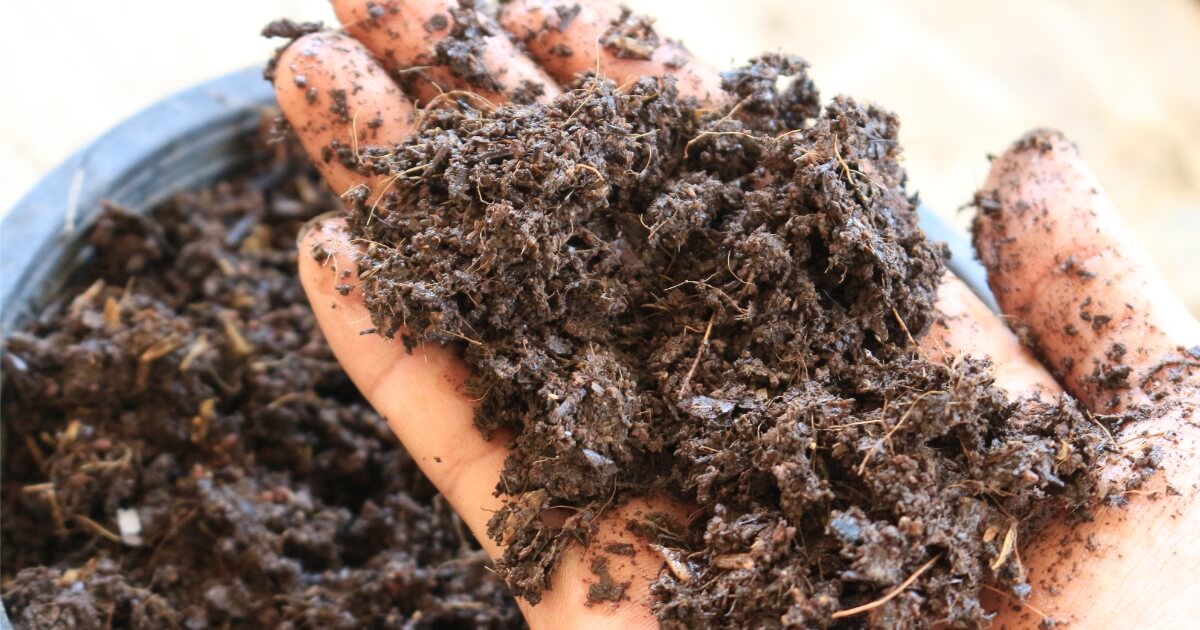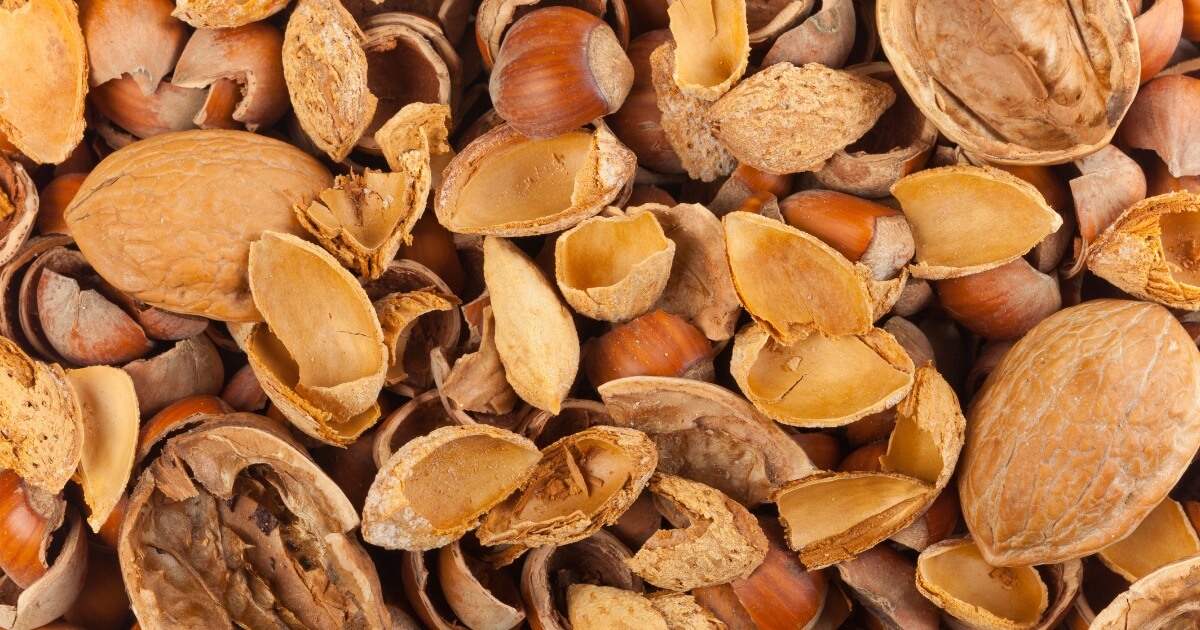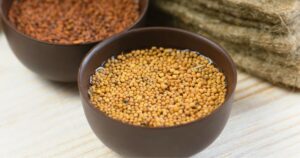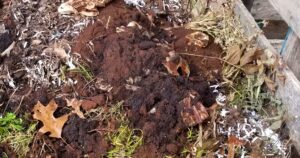Are you ready to make the most out of your compost? Hold on just a bit longer. Before you start enriching your garden, it’s important to check the pH level of your finished compost.
Why this extra step? Well, the pH level of your compost can impact the health of your plants and soil. Some pH levels might not only be less effective but could potentially harm your plants or make your soil less hospitable for growth.
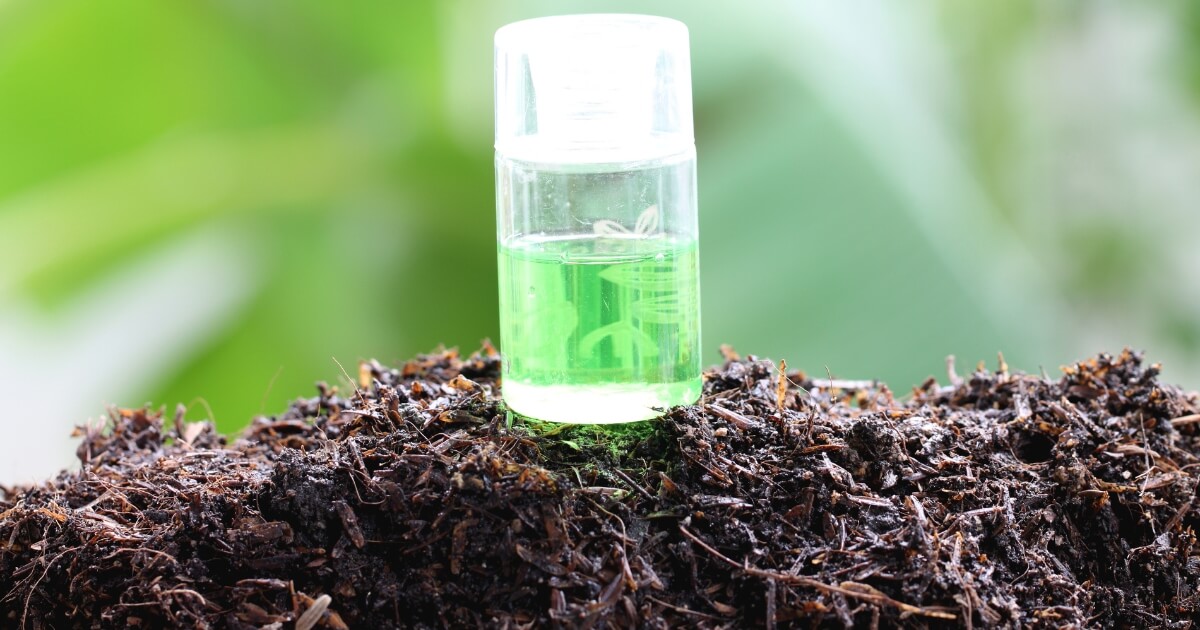
In this guide, I’ve gathered all you need to know about the pH of compost. We’ll look at how various ingredients and composting methods can swing your compost’s pH towards the acidic or alkaline side.
What Affects Compost pH Levels?
Compost pH will change due to the ingredients you add to the pile, the length of time compost has been processed, and compost pile conditions.
Most compost has a pH between 6.5 and 8, which is only slightly alkaline or acidic and safe for most garden plants.
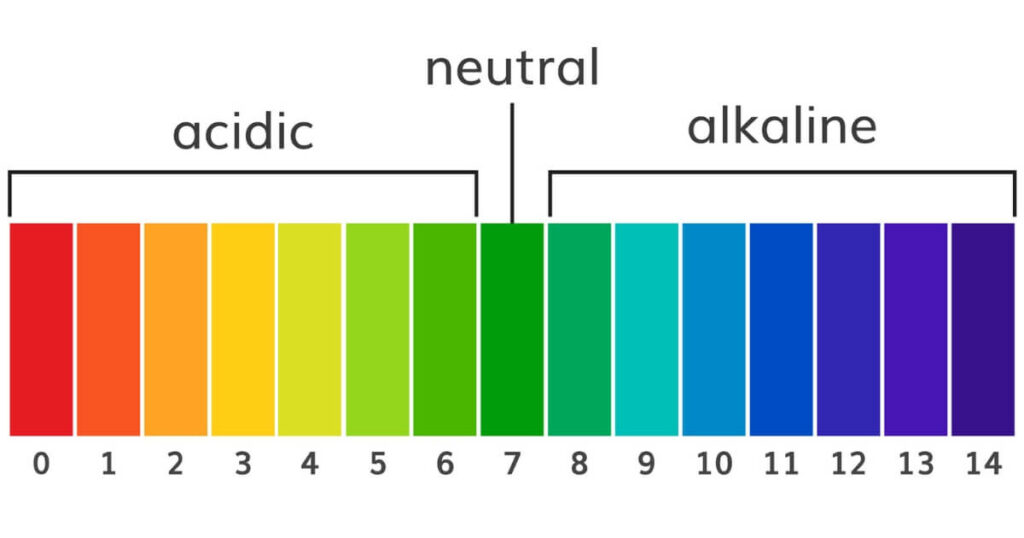
Note that the longer you let the compost process, the more the ingredients will naturally become neutral. There’s also no need to panic if compost is very acidic during the early processing stages, as pH levels fluctuate at this time.
Monitoring & Testing Your Composts pH
A foolproof way to test compost pH is to use a pH meter that is easy to poke into different areas of the compost to see the levels.
Most electronic pH meters for gardens are multi-function and will also indicate temperature and moisture levels. In addition, electronic meters are less messy to use than pH test strips.
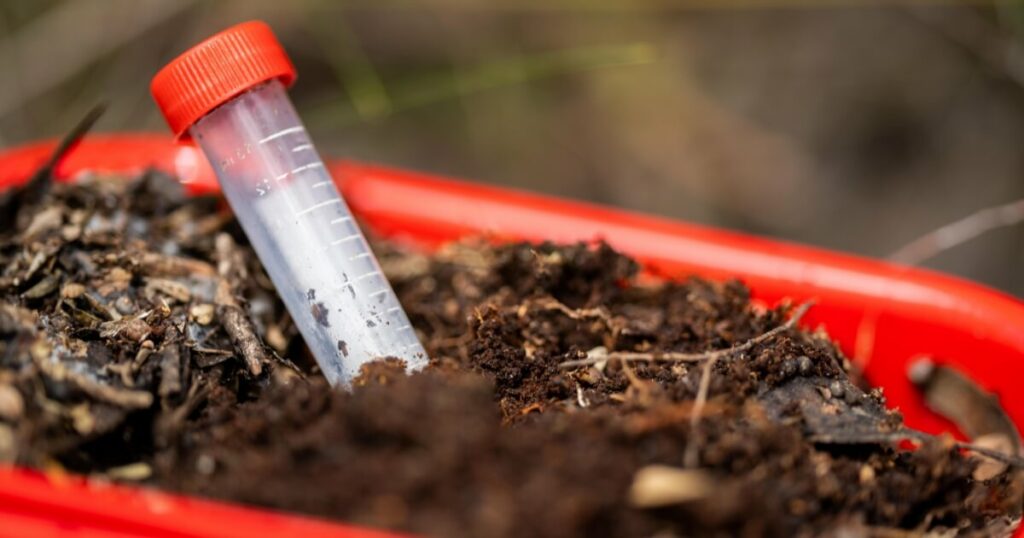
Soil test kits are another option to check compost pH, but again, these kits require more effort to use.
What Makes Compost Acidic?
Compost is acidic because the microbes working to break down the ingredients are in overdrive, which produces organic acids.
You will mainly see a pH of 6 or under (high acidity) during the first few weeks or months of composting when there are larger chunks of material to process, and the microbes are working hard.
The acidity will increase more if oxygen flow is low within the compost, as these acids that form cannot naturally dissipate and accumulate inside the compost.
Another reason compost can be acidic is the ingredients. Many organic materials from yard waste are naturally high in acid, which will transfer to your compost.
If you want to use acidic compost on acid-loving plants, you’ll need to monitor the pile with a pH meter and spread the compost around the plants at the optimal time.
Acid-loving plants include:
- Evergreen shrubs
- Daffodils
- Azaleas
- Camellias
- Nasturtiums
- Hydrangeas
- Rhododendrons
- Blueberries
What Makes Compost Alkaline?
Alkaline compost forms when too much nitrogen and ammonia gas accumulate within the pile.
The main reason for this event is there aren’t enough carbon materials inside the pile to balance the green or nitrogen ingredients.
Plants that prefer alkaline compost include:
- Lily of the Valley
- Jacob’s ladder
- Ornamental clovers
- Honeysuckle
- Lavender
- Lilacs
What Is The Ph Of Compost?
Different types of compost will offer slightly higher or lower pH levels, mainly due to what ingredients you use.
pH Of Leaf Compost
Leaf compost has an average pH of 7.0-7.5, which may seem surprising since most freshly fallen leaves have an acidic pH level below 6.
However, as soon as the leaves age and break down, the pH rises quickly into the neutral range.
Most home composting systems use large quantities of dry leaves as a carbon ingredient because they are plentiful throughout the year. The abundance of leaves is a good thing because, by weight, they provide double the minerals found in manure while also adding bulk that increases soil aeration and drainage.
Leaves from different tree species can have pH levels that are much more acidic than others. For example, sugar maple leaves have a 4.3 average pH, while white ash leaves have a pH average of 6.8. Oak leaf pH falls between 4.5 to 5.5.
Composting leaves should only be a concern if your yard has walnut or eucalyptus trees. Leaves from these trees have a chemical called juglone, which is a natural herbicide.
If you don’t allow leaf compost made with these leaves to age for several months after completion, the level of this toxic chemical may interfere with seed germination.
pH Of Composted Cow Manure
The average pH of cow manure compost is 7.0-7.4, which is much less alkaline than fresh cow manure, which has a pH of 8.5.
A cow has protective measures within its digestive system to keep most food processing in a more neutral range to prevent cell damage. Therefore, as the waste moves through the cow and becomes manure, it’s rare for the pH level to be acidic.
Cow manure compost provides lower nitrogen levels but offers high levels of phosphorus and potassium, which garden plants love.
Compost Tea pH
The pH of compost tea can vary widely, depending on the water source, but in general, the pH will fall in the 6.8-7.2 range.
To ensure your compost tea will have a pH level of around 7.0, you’ll want to start with a water pH between 6.5 and 7.5. Using pH test strips is a quick and affordable way to determine water conditions for compost tea.
If you use compost tea to water plants, please monitor your soil pH levels. Compost tea can raise pH too much over time, reducing nutrient uptake in plant roots.
You can add citric acid or other pH buffering solution to lower compost tea pH quickly.
Can You Raise Or Lower The pH Of Compost?
Yes, you can control the pH level in your compost by using different ingredients or by aerating the pile less or more.
To help increase compost acidity, use organic matter naturally high in acid, such as:
- Green pine needles
- Oak or sugar maple leaves
- Coffee grounds
You can increase and maintain compost acidity by composting ingredients in an anaerobic environment, such as inside a garbage can, bag, or trench.
If your compost pH is too acidic, turning the material regularly is the easiest solution to raise the pH.
You can raise compost pH to be more alkaline by adding fire ash, bone meal, eggshells, powdered clamshells, or hydrated lime. If your compost is too alkaline, add carbon ingredients such as sawdust or paper that microbes find easy to digest.
